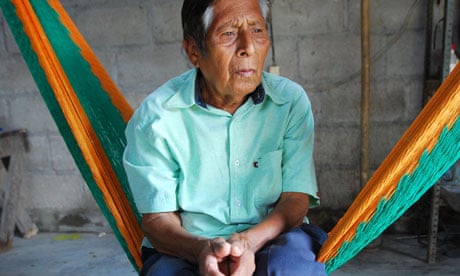The language of Ayapaneco has been spoken in the land now known as Mexico for centuries. It has survived the Spanish conquest, seen off wars, revolutions, famines and floods. But now, like so many other indigenous languages, it's at risk of extinction.
There are just two people left who can speak it fluently – but they refuse to talk to each other. Manuel Segovia, 75, and Isidro Velazquez, 69, live 500 metres apart in the village of Ayapa in the tropical lowlands of the southern state of Tabasco. It is not clear whether there is a long-buried argument behind their mutual avoidance, but people who know them say they have never really enjoyed each other's company.
"They don't have a lot in common," says Daniel Suslak, a linguistic anthropologist from Indiana University, who is involved with a project to produce a dictionary of Ayapaneco. Segovia, he says, can be "a little prickly" and Velazquez, who is "more stoic," rarely likes to leave his home.
The dictionary is part of a race against time to revitalise the language before it is definitively too late. "When I was a boy everybody spoke it," Segovia told the Guardian by phone. "It's disappeared little by little, and now I suppose it might die with me."
Segovia, who denied any active animosity with Velazquez, retained the habit of speaking Ayapaneco by conversing with his brother until he died about a decade ago. Segovia still uses it with his son and wife who understand him, but cannot produce more than a few words themselves. Velazquez reputedly does not regularly talk to anybody in his native tongue anymore.
Suslak says Ayapaneco has always been a "linguistic island" surrounded by much stronger indigenous languages.
Its demise was sealed by the advent of education in Spanish in the mid 20th century, which for several decades included the explicit prohibition on indigenous children speaking anything else. Urbanisation and migration from the 1970s then ensured the break-up of the core group of speakers concentrated in the village. "It's a sad story," says Suslak, "but you have to be really impressed by how long it has hung around."
There are 68 different indigenous languages in Mexico, further subdivided into 364 variations. A handful of other Mexican indigenous languages are also in danger of extinction, though Ayapaneco is the most extreme case.
The name Ayapaneco is an imposition by outsiders, and Segovia and Velazquez call their language Nuumte Oote, which means the True Voice. They speak different versions of this truth and tend to disagree over details, which doesn't help their relationship. The dictionary, which is due out later this year, will contain both versions.
The National Indigenous Language Institute is also planning a last attempt to get classes going in which the last two surviving speakers can pass their knowledge on to other locals. Previous efforts have failed to take hold due to lack of funding and limited enthusiasm.
"I bought pencils and notebooks myself," Segovia complains. "The classes would start off full and then the pupils would stop coming."
Suslak says the language is particularly rich in what he calls sound symbolic expressions that often take their inspiration from nature, such as kolo-golo-nay, translated as "to gobble like a turkey".
Endangered languages
Ter Sami
Spoken by only two elderly people in the Kola peninsula in the north-west of Russia. Had about 450 speakers at the end of the 19th century until it was prohibited in schools in the 1930s.
Kayardild
Kayardild is spoken fluently by four people – all elderly Aboriginals – on Bentinck and Mornington Islands in Queensland, Australia.
Lengilu
Language from the north-eastern area of Kalimantan, Indonesia. Lengilu was at one stage spoken by 10 people. Today, there are only four.
Mabire
Three people reportedly speak Mabire in the Oulek village of Chad. The chief of the Mabire is the only Mabire speaker in his village so people doubt whether he is still fluent.
Tehuelche
Originally the language of nomadic hunters in Chile. The last four speakers live in Patagonia, Argentina.
Emine Sinmaz





Comments (…)
Sign in or create your Guardian account to join the discussion